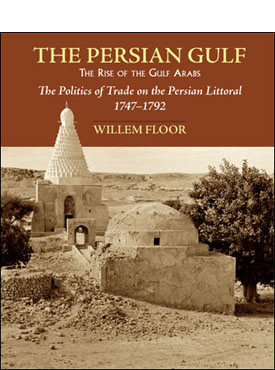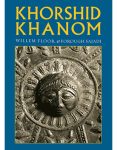About the Book
The history of the Persian Gulf during the eighteenth century is still little known. This gap is now being filled by the historian and renowned scholar Willem Floor, first with publication of The Persian Gulf: A Political and Economic History of Five Port Cities, 1500-1730, and now with The Persian Gulf: The Rise of the Gulf Arabs, The Politics of Trade on the Persian Littoral, 1747-1792. This study tells the fascinating story of the shift in trade from the lower to the upper Gulf, while there was also a partial shift of trade from the northern Persian coast to the southern Arab coast. It tells of the departure of first the Dutch then the British trading companies, and the rise of the local rulers who began to dominate political developments, whether it was the Imam of Oman in Masqat, the Qavasem in the Strait of Hormuz, the Ka’b in the Shatt al-Arab, Sheikh Naser in Bushire and Bahrain, Mir Mohanna in Dashtestan and at the head of the Gulf, and the ‘Otobis at Kuwait, Bahrain and Zubara. And finally it tells of how, because of a lack of interest by the Persian and Ottoman governments in the region, the Bombay fleet of the East India Company increasingly used their naval power to protect commercial interests in the Gulf, which paved the way for a similar role played by the British Royal Navy in the nineteenth century
About the Author
Willem Floor studied development economics and non-western sociology, as well as Persian, Arabic and Islamology from 1963-67 at the University of Utrecht (the Netherlands). He received his doctoral degree from the University of Leiden in 1971. Since 1983, Dr. Floor was employed by the World Bank as an energy specialist, however, after his retirement in 2002, he has dedicated his time to the study of the social and political history of Iran, and has published extensively throughout this time. His books include: Public Health in Qajar Iran, Agriculture in Qajar Iran, and The History of Theater in Iran, as well as, The Persian Gulf: A Political and Economic History of 5 Port Cities, 1500-1730, its second volume, Persian Gulf: The Rise of the Gulf Arabs, 1747-1792, third volume, The Rise and Fall of Bandar-e Lengeh, the fourth volume, Bandar Abbas: The Natural Gateway of Southeast Iran, and the fifth volume, The Persian Gulf: Links with the Hinterland Bushehr, Borazjan, Kazerun, Banu Ka’b, & Bandar Abbas, The Persian Gulf: The Hula Arabs of The Shibkuh Coast of Iran, and The Persian Gulf: Dutch-Omani Relations A Commercial & Political History 1651-1806, and The Persian Gulf: Muscat – City, Society and Trade . He has also published, Travels Through Northern Persia, 1770-1774, Titles and Emoluments in Safavid Iran, and A Social History of Sexual Relations in Iran; Labor and Industry in Iran, 1850-1941; Guilds, Merchants and Ulama in 19th Century Iran; The Rise and Fall of Nader Shah; Games Persians Play, and History of Bread in Iran. His translations include: Samuel Gottlieb Gmelin’s Travels Through Northern Persia 1770–1774 , and with Hasan Javadi, Abbas Qoli Aqa Bakikhanov’s The Heavenly Rose-Garden: A History of Shirvan & Daghestan; Evliya Chelebi’s Travels in Iran and the Caucasus, 1647 and 1654; A Man of Two Worlds: Pedros Bedik in Iran, 1670–1675, and Awake: A Moslem Woman’s Rare Memoir of Her Life and Partnership with the Editor of Molla Nasreddin, the Most Influential Satirical Journal of the Caucasus and Iran, 1907–1931
Willem Floor was invited to Tehran in February, 2017 and presented with the Farabi International Prize for Humanitarian Studies.








